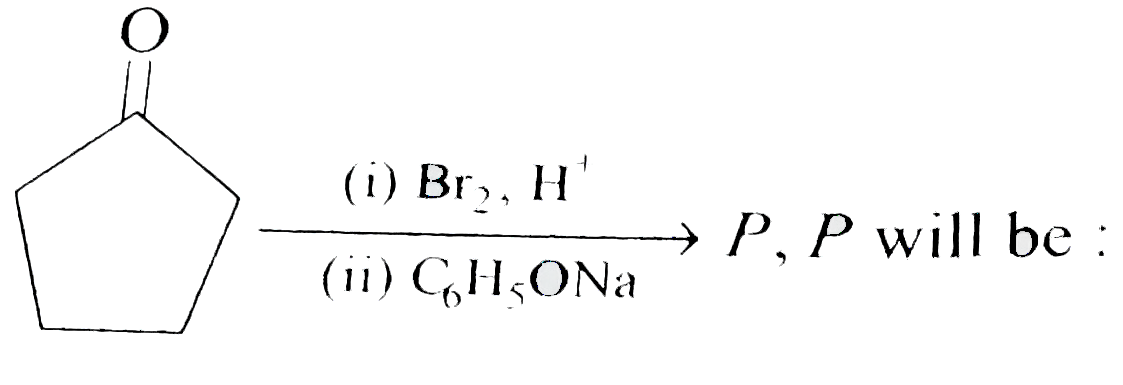Find out given cell is spontaneous or non-spontaneous
H2/H∘P1∣∣H+/H2P2. If P1>P2
To determine whether the given electrochemical cell is spontaneous or non-spontaneous, we can follow these steps:
Step 1: Identify the Cell Components
The cell is represented as:
P1(H2//H+)||P2(H+//H2)
This indicates that both electrodes are hydrogen electrodes, where:
- Electrode 1 (left side) has hydrogen gas at pressure P1 and H+ ions.
- Electrode 2 (right side) has H+ ions and hydrogen gas at pressure P2.
Step 2: Determine the Reactions at Each Electrode
- At the Cathode (Reduction):
2H++2e−→H2
This occurs at the electrode with lower pressure of hydrogen gas.
- At the Anode (Oxidation):
H2→2H++2e−
This occurs at the electrode with higher pressure of hydrogen gas.
Step 3: Write the Overall Cell Reaction
The overall cell reaction can be written as:
H2(anode)→2H++2e−(oxidation)
2H++2e−→H2(cathode)(reduction)
Step 4: Calculate the Reaction Quotient (Q)
The reaction quotient Q is given by:
Q=(H+)2PH2
For our cell:
- At the anode: (H+)=P1 (since it is in the anode compartment)
- At the cathode: (H+)=P2
Thus,
Q=(P2)2P1
Step 5: Apply the Nernst Equation
The Nernst equation is:
Ecell=E∘cell−0.0591nlogQ
For hydrogen electrodes, E∘cell=0 V. Therefore:
Ecell=−0.05912log((P2)2P1)
Step 6: Analyze the Conditions
Given that P1>P2:
- This implies P2P1<1
- Therefore, log(P2P1)<0
Step 7: Determine the Sign of E_cell
Since log((P2)2P1)<0:
- The term −0.05912logQ becomes positive.
- Thus, Ecell>0.
Step 8: Conclusion
A positive Ecell indicates that the cell reaction is spontaneous. Therefore, the given cell is spontaneous.
---
The cell is represented as:
P1(H2//H+)||P2(H+//H2)
This indicates that both electrodes are hydrogen electrodes, where:
- Electrode 1 (left side) has hydrogen gas at pressure P1 and H+ ions.
- Electrode 2 (right side) has H+ ions and hydrogen gas at pressure P2.
- At the Cathode (Reduction):
2H++2e−→H2
This occurs at the electrode with lower pressure of hydrogen gas.
H2→2H++2e−
This occurs at the electrode with higher pressure of hydrogen gas.
The overall cell reaction can be written as:
H2(anode)→2H++2e−(oxidation)
2H++2e−→H2(cathode)(reduction)
The reaction quotient Q is given by:
Q=(H+)2PH2
For our cell:
- At the anode: (H+)=P1 (since it is in the anode compartment)
- At the cathode: (H+)=P2
Q=(P2)2P1
The Nernst equation is:
Ecell=E∘cell−0.0591nlogQ
For hydrogen electrodes, E∘cell=0 V. Therefore:
Ecell=−0.05912log((P2)2P1)
Given that P1>P2:
- This implies P2P1<1
- Therefore, log(P2P1)<0
Since log((P2)2P1)<0:
- The term −0.05912logQ becomes positive.
- Thus, Ecell>0.
A positive Ecell indicates that the cell reaction is spontaneous. Therefore, the given cell is spontaneous.
Topper's Solved these Questions
- ELECTROCHEMISTRY BOOK - AAKASH INSTITUTECHAPTER - ELECTROCHEMISTRY EXERCISE - Try Yourself
19 Videos
- ELECTROCHEMISTRY BOOK - AAKASH INSTITUTECHAPTER - ELECTROCHEMISTRY EXERCISE - Assignment (SECTION A) Objective Type Questions (One option is correct)
43 Videos
- COORDINATION COMPOUNDS BOOK - AAKASH INSTITUTECHAPTER - COORDINATION COMPOUNDS EXERCISE - Assignment (Section-J Aakash Challenger Questions )
10 Videos
- ENVIRONMENTAL CHEMISTRYBOOK - AAKASH INSTITUTECHAPTER - ENVIRONMENTAL CHEMISTRYEXERCISE - ASSIGNMENT (SECTION-D) (Assertion - Reason Type Questions)
5 Videos
Similar Questions
Knowledge Check
The emf of given cell Pt−H2P1∣∣H+∣∣H2−PtP2 is :
ARTFlog'P1P2BRT2Floge(P1)P2CRTFloge(P2)P1DNone of theseH4P2–––O7+H2O→2H3PO4
AIf product is oxy acid with -ic suffix.BIf product is oxy acid with -ous suffixCIf product are two oxy acids one with -ic suffix and otherone with -ous suffix.DIf product is not oxy acid, neither with -ic suffix nor with -ous suffixH4P2–––O+H2O→H3PO3
AIf product is oxy acid with -ic suffix.BIf product is oxy acid with -ous suffixCIf product are two oxy acids one with -ic suffix and otherone with -ous suffix.DIf product is not oxy acid, neither with -ic suffix nor with -ous suffix
H4P2–––O8+H2O→H3PO4+H2O2
View SolutionH4P2–––O8+H2O→H3PO4+H2O2
View SolutionThe cell reaction for the given cell is spontaneous if:
Pt,H2(P1atm)∣∣H+(1M)∣∣H2(P2atm),Pt
View SolutionThe cell reaction for the given cell is spontaneous if:
Pt,H2(P1atm)∣∣H+(1M)∣∣H2(P2atm),Pt
View Solution (i)Br2,H+−−−−−−−−→(ii)C6H5OnaP,P will be
(i)Br2,H+−−−−−−−−→(ii)C6H5OnaP,P will be
View Solution
